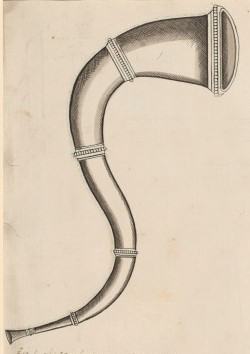
The ransingha or ransinga is a type of primitive trumpet made of copper or copper alloys, used in both India and Nepal. The instrument is made of two metal curves, joined to form an "S" shape. [1] It may also be reassembled to form a crescent. [2]
Contents
It is part of a group of curved-tube instruments that include the ransingha, the narsinga and the sringa. It may also be related to the laawaa and Tibetan dungchen, both straight tubular copper horns.



